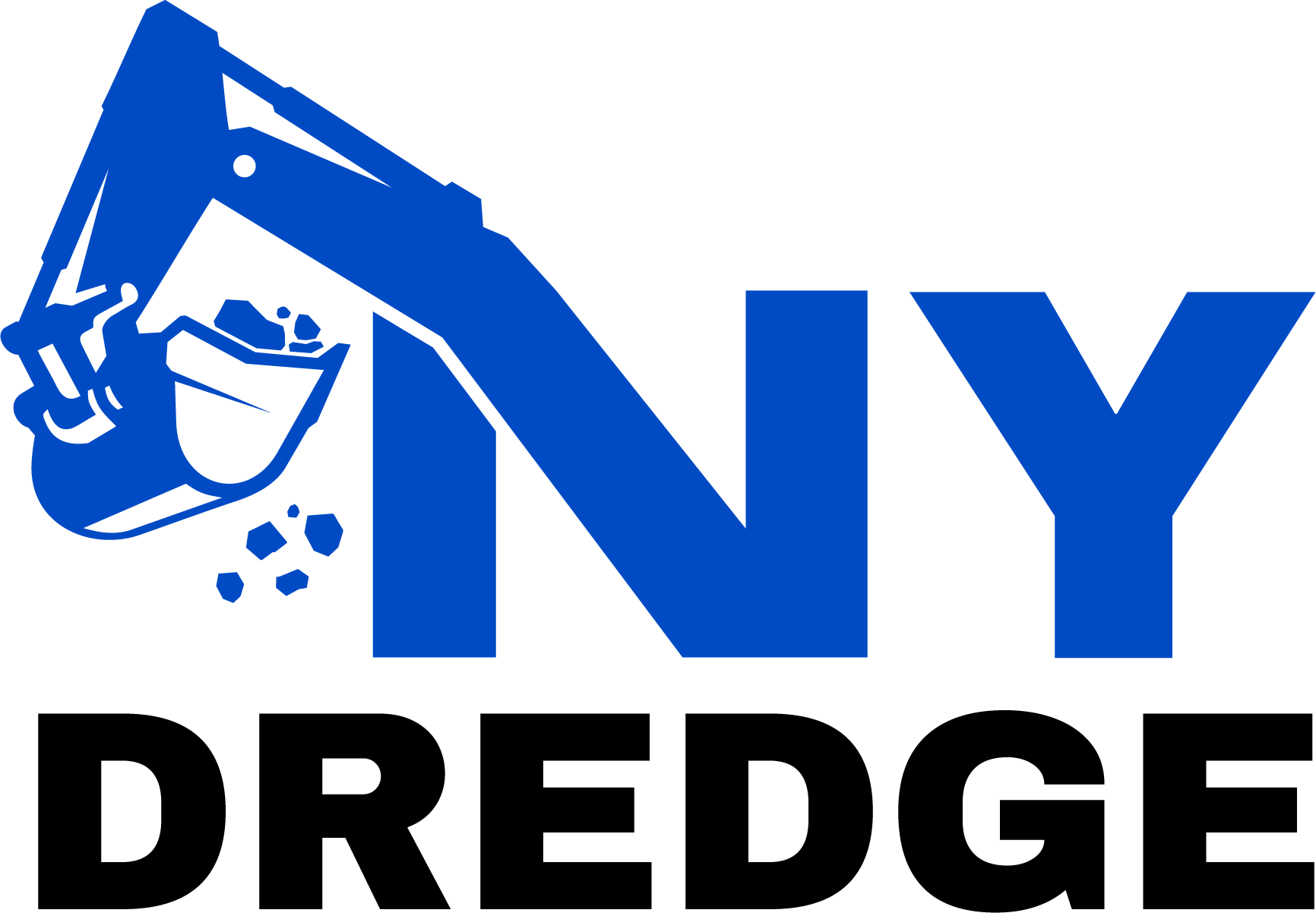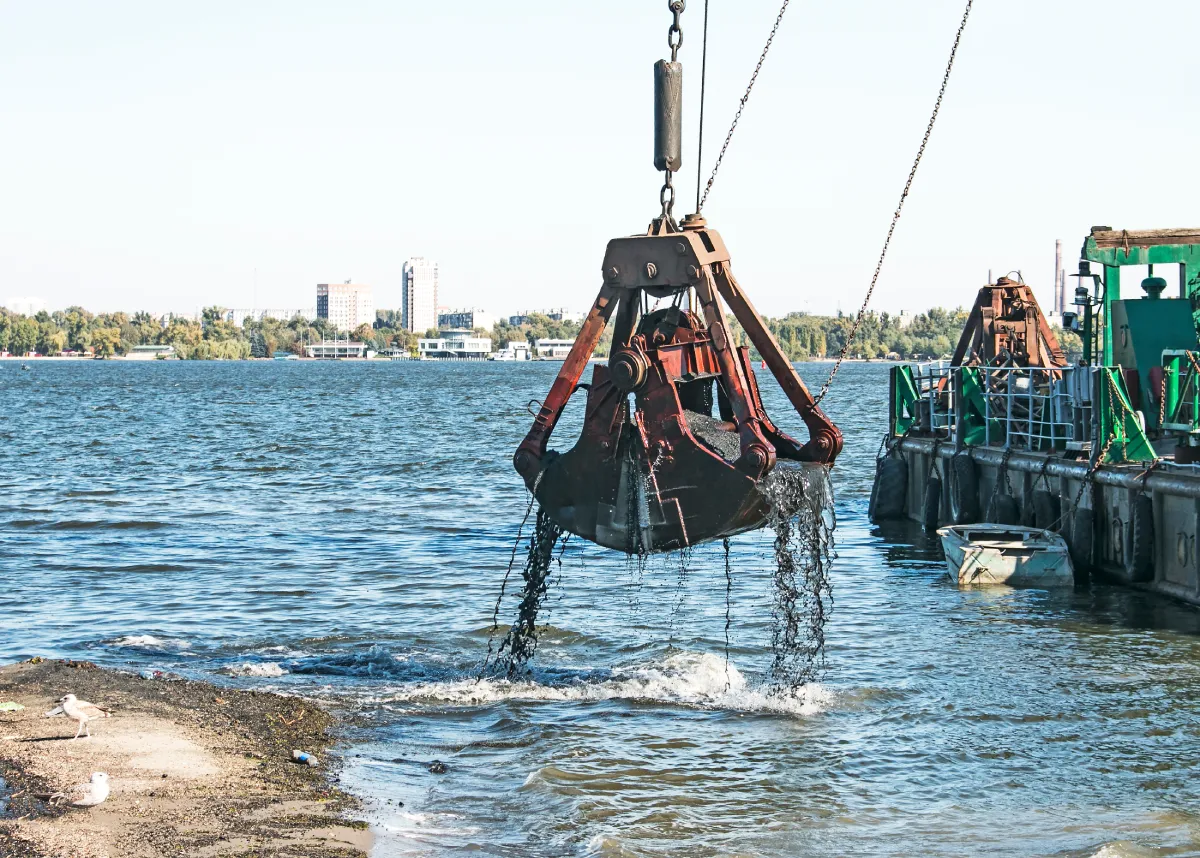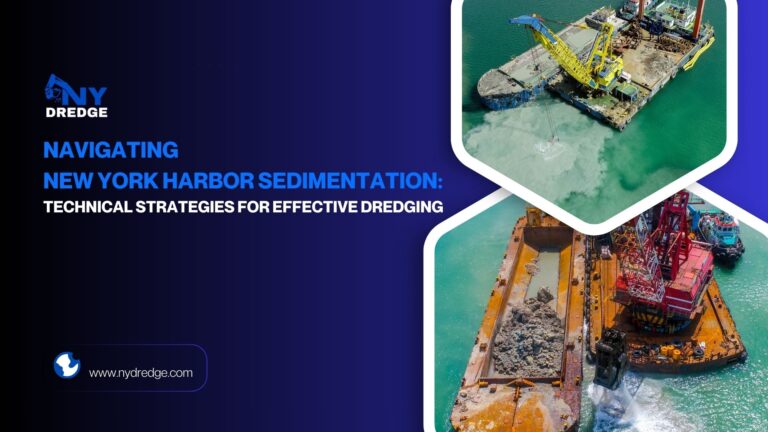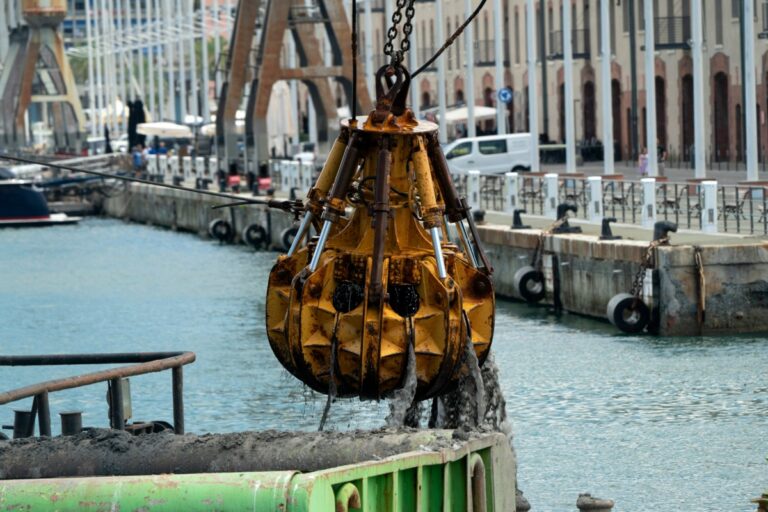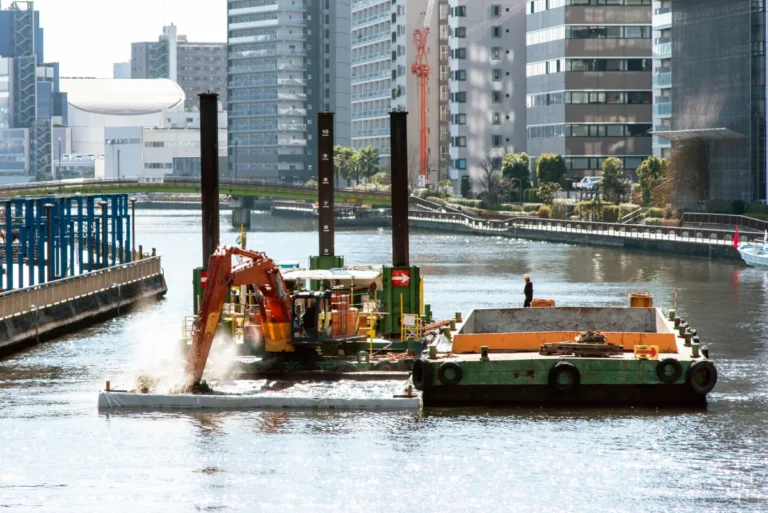Reservoirs and lagoons play a vital role in water storage, flood control, irrigation, and ecological stability—but their effectiveness is constantly threatened by sediment accumulation. As silt, debris, and organic matter build up over time, these water bodies experience reduced capacity, degraded water quality, and structural strain on critical infrastructure. Reservoir dredging and lagoon dredging have become essential maintenance strategies for restoring depth, improving water flow, and prolonging asset life. However, the effectiveness of dredging depends heavily on choosing the right techniques, understanding environmental factors, and deploying suitable equipment tailored to each site’s unique challenges.
Understanding Sedimentation in Reservoirs and Lagoons
Sedimentation is a persistent challenge in both reservoir dredging and lagoon dredging projects, directly affecting water storage capacity, quality, and system performance. Over time, reservoirs and lagoons accumulate vast amounts of sediment transported by natural and anthropogenic processes, requiring regular intervention to maintain their functionality and ecological balance.
One of the primary sources of sediment in water reservoirs is natural erosion—particularly from upstream catchment areas where exposed soil is carried into the water body by rainfall or wind. Runoff from agricultural land, urban zones, and construction sites often introduces a higher load of fine particles, nutrients, and contaminants. Additionally, upstream discharge from rivers and streams plays a major role in transporting suspended solids, especially during storm events or seasonal flooding. Human activities such as deforestation, mining, and poor land-use practices further accelerate the sedimentation process, overwhelming natural sediment transport balances.
The composition of the deposited material varies depending on the region and upstream sources. Typical dredged materials include fine silt and clay, which can quickly settle in calmer areas of the reservoir, as well as organic matters such as decaying vegetation, algae, or biofilm. In many lagoon dredging operations, there’s also a notable presence of coarse debris, including trash, stones, and construction remnants that accumulate in low-flow or stagnant zones.
Unchecked sediment build-up can significantly reduce the operational capacity of reservoirs by displacing valuable water storage volume. It also degrades water quality by harboring pathogens, encouraging algal blooms, and reducing oxygen levels. Moreover, excessive sediment can increase wear and tear on intake structures, gates, turbines, and other equipment, leading to premature damage and increased maintenance costs. These challenges make reservoir dredging not just a restoration task, but a critical component of water infrastructure management.
Key Reservoir Dredging Techniques Explained
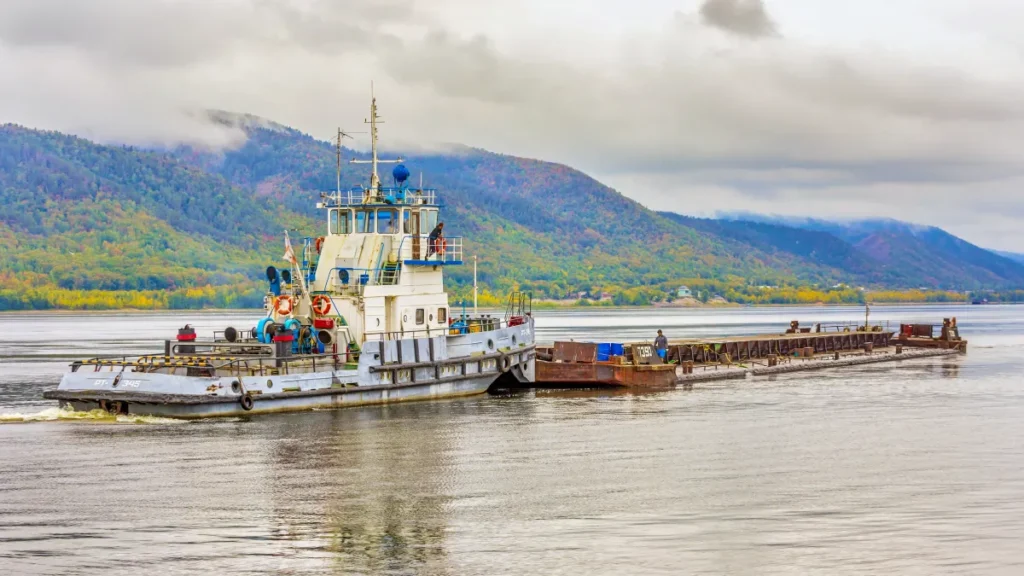
Reservoir dredging requires a tailored approach, depending on factors such as sediment type, water depth, site accessibility, environmental regulations, and project goals. Selecting the right dredging technique is essential for achieving efficient sediment removal while minimizing ecological disruption. Whether tackling large-scale water reservoir dredging or smaller-scale lagoon dredging, understanding the core methods helps ensure successful outcomes.
Hydraulic Dredging
Hydraulic dredging is one of the most widely used methods for removing soft, fine-grained sediments, such as silt and clay. This technique uses a dredge pump to mix sediment with water, creating a slurry that is transported through pipelines to designated discharge or dewatering sites. Ideal for deep or expansive reservoirs, hydraulic dredging offers high production rates and is especially suited for continuous sediment removal. It is often combined with booster pumps for long-distance slurry transport in water reservoir dredging projects.
Mechanical Dredging
Mechanical dredging involves the use of heavy equipment, such as backhoes, clamshells, and excavators, mounted on barges or amphibious carriers, to physically scoop and remove sediment. This method is effective for coarser or compacted materials, debris-laden environments, and areas where precision is required. In lagoon dredging operations, mechanical methods are often preferred due to shallow depths and limited maneuverability. Mechanical dredging also enables selective removal and is easier to deploy in confined or structurally sensitive zones.
Cutterhead and Jetting Systems
Cutterhead dredges use a rotating cutter mechanism at the suction inlet to agitate and loosen compacted sediment before pumping. Jetting systems apply high-pressure water to break up consolidated layers. Both methods are advantageous when dealing with dense deposits that are difficult to dislodge through suction alone. They are commonly integrated into hydraulic dredging systems to enhance efficiency in areas with stubborn sediment.
Diver-Operated and Remote-Controlled Dredges
For sensitive environments or precise operations—such as near intake structures, dam faces, or underwater infrastructure—diver-operated and remote-controlled dredging units are employed. These systems allow fine control, minimal disturbance, and enhanced safety. Compact electric or hydraulic submersible pumps can be maneuvered by divers or remotely operated vehicles (ROVs), making them ideal for specialized tasks within both reservoir and lagoon dredging scenarios.
Choosing the Right Equipment for Water Reservoir Dredging
| Equipment Type | Best For | Depth Range | Mobility | Notable Limitations |
| Cutter Suction Dredge | Large reservoirs | Deep | Stationary/anchored | Needs a support barge |
| Amphibious Excavators | Shallow banks & lagoon dredging | Low | High | Limited capacity |
| Submersible Dredge Pumps | Remote or deep spot dredging | Medium to high | Moderate | Needs HPU |
| Mechanical Bucket Dredge | Debris or coarse material | Low to medium | Stationary | Lower precision |
Environmental and Regulatory Considerations
Environmental compliance is a foundational element of all reservoir dredging and lagoon dredging projects. Given the ecological sensitivity of water bodies and the potential downstream impacts of sediment disturbance, operators must navigate a complex framework of permits, environmental standards, and best practices to ensure the responsible execution of their activities.
For projects in the United States, key regulatory bodies include the U.S. Army Corps of Engineers (USACE) and the Environmental Protection Agency (EPA). These agencies typically require Section 404 permits under the Clean Water Act for any discharge of dredged or fill material into waters of the U.S. Additionally, projects may be subject to the National Environmental Policy Act (NEPA), which requires an Environmental Assessment (EA) or a full Environmental Impact Statement (EIS), depending on the project’s scope and location. State and regional water boards may impose additional restrictions or require 401 Water Quality Certifications, particularly for dredging operations near drinking water supplies or ecologically sensitive areas.
A key environmental challenge during reservoir dredging is managing turbidity—the suspension of fine sediment particles in the water column. Elevated turbidity can block sunlight penetration, disrupt aquatic ecosystems, and transport contaminants downstream. To mitigate this, dredging contractors may implement silt curtains, real-time turbidity monitoring, and seasonal timing restrictions to minimize biological impact, especially during fish spawning periods.
Another critical consideration is the protection of aquatic life and benthic habitats. Dredging can alter water temperature, dissolve oxygen levels, and resuspend nutrient-rich sediments that contribute to algal blooms. Regulatory agencies often mandate baseline ecological assessments, sediment toxicity testing, and habitat restoration plans as part of the project approval process.
Dewatering regulations also play a vital role in managing dredged material. Whether using mechanical presses, geotextile tubes, or settling ponds, operators must ensure that effluent water released back into the reservoir or nearby channels meets discharge standards for turbidity, pH, and contaminant load. In some regions, the handling of dredged sludge is governed by solid waste disposal laws, especially if the material contains heavy metals or organic pollutants.
In the case of lagoon dredging, the regulatory burden can be even more nuanced. Lagoons often serve as habitats for migratory birds, amphibians, or endangered species, and their smaller size amplifies the environmental impact of sediment removal. Noise pollution, vegetation loss, and chemical release are heightened risks in these ecosystems, requiring a more sensitive approach to equipment use, access planning, and post-dredging restoration.
Best Practices for Efficient and Sustainable Reservoir Dredging
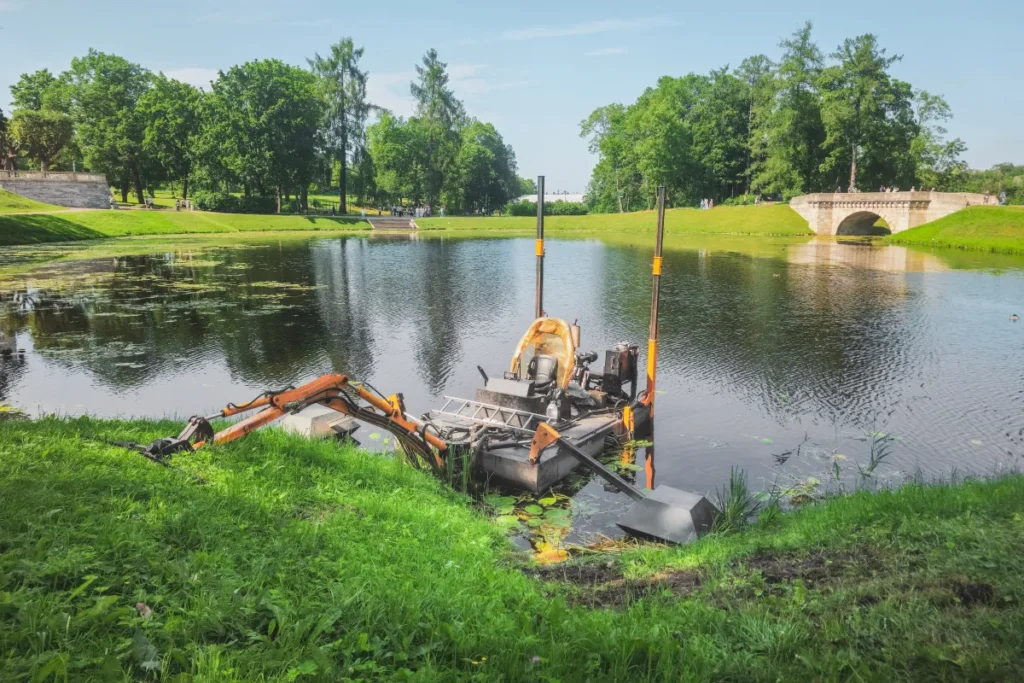
Implementing industry-proven best practices is crucial for maximizing efficiency and ensuring sustainability in reservoir and lagoon dredging operations. These practices not only reduce operational risk and environmental impact but also help extend the service life of water infrastructure by enabling more targeted and cost-effective sediment removal strategies.
A well-executed project begins with a pre-dredging hydrographic survey, using sonar mapping and depth-sounding techniques to establish baseline conditions. This is typically coupled with sediment sampling and analysis to determine the composition, density, and contamination level of the material to be dredged. These data points guide equipment selection, dredging method, and spoil site planning, while also ensuring compliance with environmental regulations.
During operations, real-time monitoring systems play a critical role in maintaining control over dredging performance and minimizing ecological disruption. Technologies such as RTK GPS enable precise dredge head positioning, while turbidity sensors monitor water clarity to prevent exceeding permitted thresholds. Flow meters monitor slurry velocity and pump output, enabling operators to adjust parameters and maintain consistent production while reducing equipment strain.
To avoid costly delays and unplanned outages, successful dredging teams prioritize modular equipment setups, which can be easily mobilized, reconfigured, or transported to different sections of the reservoir. Maintaining an inventory of critical spare parts and scheduling crew rotations ensures that operations remain continuous and downtime is minimized—especially important for time-sensitive projects or those occurring during limited seasonal windows.
Following the active dredging phase, post-dredging bathymetric surveys are conducted to verify that target depths have been reached and no critical zones have been overlooked. These surveys also serve as documentation for project closeout and regulatory compliance, offering a data-driven comparison with pre-dredging conditions.
Another essential aspect of best practices is slurry dewatering and spoil site management. Efficient dewatering—whether through mechanical presses, geotubes, or natural evaporation—ensures that solids can be handled, stored, or reused with minimal footprint. Selecting and preparing suitable spoil sites, lined containment areas, or agricultural reuse zones is crucial for minimizing environmental impact and ensuring regulatory compliance, particularly when handling nutrient-rich or potentially contaminated dredged material.
Specialized Approaches for Lagoon Dredging Projects
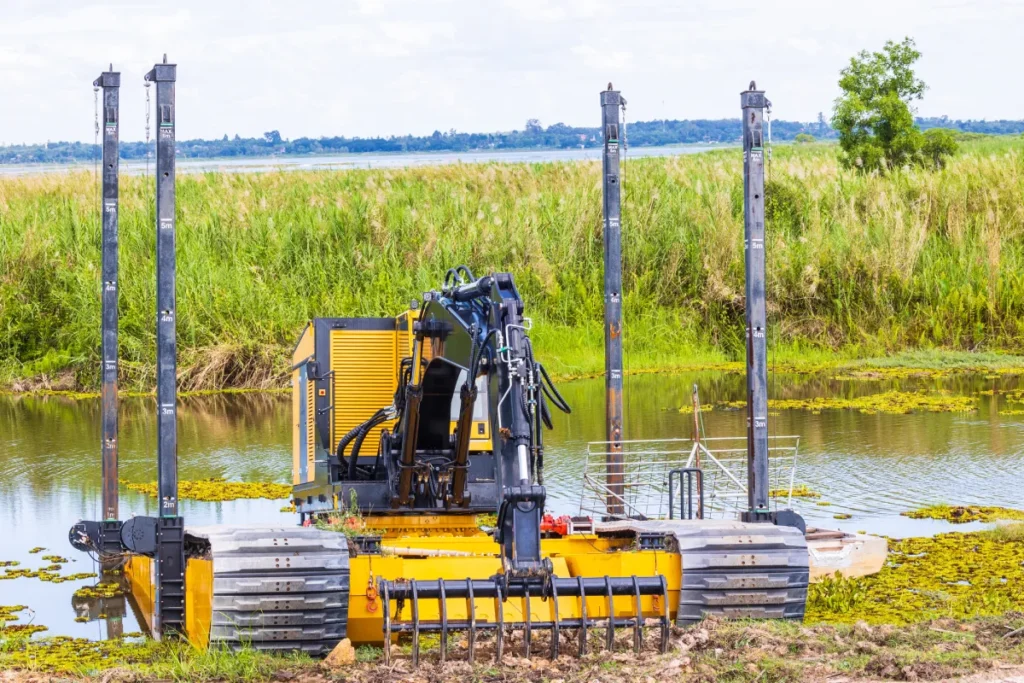
While reservoir dredging typically involves large-scale operations with high sediment volumes and expansive access zones, lagoon dredging presents a distinct set of challenges that require specialized equipment and adaptive techniques. The smaller scale, unique sediment profiles, and sensitive ecological environments associated with lagoons necessitate a more refined and flexible approach.
One of the key differences lies in the physical characteristics of lagoons. Unlike deep and broad water reservoirs, lagoons tend to be shallow, irregularly shaped, and surrounded by soft banks or dense vegetation. Sediment in lagoons often consists of organic-rich material, decomposed plant matter, and fine silt that settles quickly in stagnant water. These soft sediments can clog traditional equipment, requiring dredging solutions that operate effectively in low-flow, confined areas.
Given these constraints, operators typically deploy smaller-scale dredge systems, such as compact submersible pumps, diver-operated suction heads, or low-profile cutterheads mounted on floating platforms. These systems are often integrated into modular barges or pontoon platforms that can be easily transported and assembled on-site. Their smaller footprint and enhanced maneuverability make them ideal for working in tight spaces, near embankments, or around submerged structures.
Lagoon dredging projects also contend with a high volume of floating debris, aquatic vegetation, and algal overgrowth, which can entangle equipment and restrict visibility. To mitigate these issues, pre-clearing operations may include the use of skimmers, aquatic weed harvesters, or manual removal. Dredge heads are often fitted with debris screens or cutting attachments to prevent clogging and protect pumps from damage.
Another consideration is the limited maneuverability within lagoon environments. Access points may be restricted by narrow inlets, surrounding development, or environmentally protected zones. In such cases, amphibious dredging equipment or remote-controlled dredge platforms offer a practical solution, allowing for targeted sediment removal without the need for extensive land disturbance or large-scale mobilization.
A Strategic Approach to Long-Term Reservoir Management
Effective reservoir and lagoon dredging isn’t just about removing sediment—it’s about implementing long-term, sustainable solutions that enhance waterway performance while respecting environmental constraints. By combining advanced surveying, real-time monitoring, adaptive equipment, and regulatory compliance, modern dredging practices can significantly enhance efficiency and minimize disruptions. At NY Dredge, we specialize in helping municipalities, engineers, and operators tackle complex dredging projects with precision and care. Whether you’re restoring a stormwater lagoon or maintaining a drinking water reservoir, we have the tools, expertise, and experience to get it done right—partner with us to ensure your water systems operate at full capacity.
